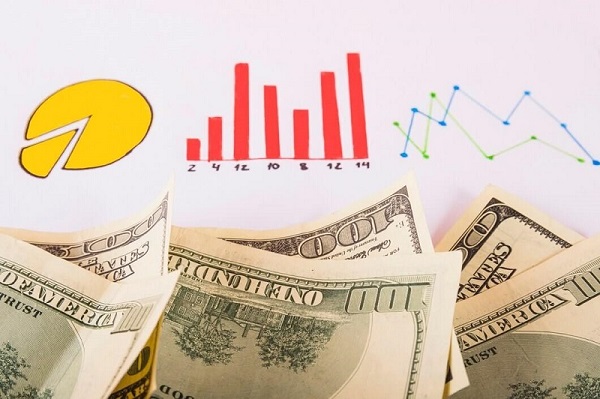Australian Dollar Trends: What History Tells Us About Its Future
4 min read
Over time, there have been various trends that have influenced the Australian Dollar. From global occurrences to economic indicators, the list is endless. Then there are commodity factors to consider.
Data from the past can assist you in learning more about the ins and outs of Australian Dollar trends. To predict the future of these trends necessitates you to analyze existing conditions. To do so, take into consideration budding catalysts. How do you do this? Take an interest in trade relationships, economic indicators, and global market dynamics. Doing so will provide you with an overarching outlook.
In this handy guide, we have delved into the data of the past, giving insight into how this has affected trends. In addition, what to expect going forward. Read on to discover more.
A Commodity Driven Currency
Just like the Canadian Dollar, the Australian Dollar is a commodity-driven currency. What does this mean? When we discuss the Australian Dollar vs Canadian Dollar, both are influenced by economic indicators, trade balances, commodity prices and trends, and global market changes.
It’s important to remember Australia is home to an impressive export economy. During the last five reported years, the exports of Australia have changed by $139B from $204B in 2016 to $343B in 2021. The most recent exports led by Iron Ore ($118B), Coal Briquettes ($54.3B), Petroleum Gas ($39.2B), Gold ($17.6B), and Wheat ($7.36B).
Many fluctuations are down to ever-changing resource costs. This boasts a focus on energy and minerals. Following these price shifts can assist you in predicting future currency expectations and movements.
If you wish to learn more about the CAD and AUD’s relationship, you’ll need to look into their historical conduct, comparing this against existing conditions.
International Market Sentiments
Another trend to take into consideration? The Australian dollar has followed suit with international market prices. This has been a direct response to global risk sentiment.
The AUD’s exchange rate has been influenced by various local and international factors. Two of the most prevalent? The differences between Australian interest rates and the interest rates of advanced economies. The AUD depreciated slightly when the mining boom closed in 2013. In addition, the introduction of quantitative easing measures, which took place recently, has affected this.
Also See: Vacant Land in Australia – What Are the Risks and What Can You Do
The Lowest Yet
The AUD reached its all-time low when COVID-19 hit in the early 2000s. This caused chaos across the globe, with Australia experiencing heightened market stress. Countries seeing sharp daily rises in new COVID-19 cases saw their currencies weaken. Since this global pandemic, the Australian dollar has appreciated. How? Commodity prices have again risen and prospects for a global growth recovery have improved. Despite this, it still stands below its 2013 peak.
Trade and Interest Rates
Both trade and interest rates are determinants of the AUD. These determinants provide insight into the expected demand for Australian dollars going forward. They focus on Australian dollar asset return, which relates to global comparable assets.
What does this mean? They influence the demand for AUD and predict what the future Australian dollar looks like.
Short-Term Interest Rate Trends
Following the global financial crisis, short-term interest rates dropped dramatically to zero. This affected several major advanced economies. Despite this, policy rates in Australia stayed high. They remained higher for several years, showcasing a strong performance related to the investment resources boom. At this time, there were fewer domestic financial system stresses.
However, in 2013, the Reserve Bank loosened its monetary policy. This meant interest rates dropped from 3 percent to 0.1 percent. When considering the interest rate on an Australian Government Securities (AGS) that was fixed for three years, this decline is one of the main factors behind the depreciation of the AUD.
Bond Purchase Programs
One of the main reasons for introducing the bond purchase program was the higher long-term interest rates in Australia, which were notably bigger than those in other advanced economies. Why? Foreign central banks introduced fresh or expanded asset purchase programs to counteract the financial and economic disruptions linked to COVID-19. Following the peak of the crisis in March 2020, these high long-term interest rates contributed to pressures on the Australian dollar exchange rate.
As rates reached low levels across the globe, various central banks introduced new policies, including quantitative easing measures. What did this mean? Central banks purchased government bonds in the secondary market. Why? To attempt to lower longer-term interest rates. The result? The exchange rate was affected.
Also See: Start an Online Business in 2023 with These 5 Simple Ideas
The Bottom Line
The AUD is one notable currency that has shifted dramatically over time. Why? This is down to various factors, particularly global events, which the AUS has proven to be both sensitive to and resilient to in the past.
Commodity prices in particular have been responsible for the fluctuation in the AUD. These comprise various exports, such as agricultural and mineral products. Both are recurring themes. For example? Australia’s trade terms in response to the export and import price ratio.
At the height of the mining boom, the AUD was at its peak. When this came to a close, it lost its momentum, despite a handful of notable commodity swings in recent years.
Analyzing current and recent economic data, global market conditions, and government policies will assist you in predicting an accurate assessment of the AUD’s existing currency position and future trends.







